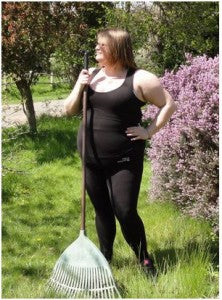Gardeners lose weight without dieting!

It’s the month when resolutions are made and so very many people think about dieting to lose the extra pounds gained over the festive season. A recent survey showed that about 6 in 10 people were planning to shed weight or concentrate on improving their fitness for their New Year promise. The good news for gardeners is that gardening substitutes for diets. Yes REALLY! Getting out there and involving yourself in digging, bending, walking, lifting, planting, weeding, pushing and kneeling makes gardening a moderate to strenuous kind of exercise. Estimates vary according to how much you do of which kind of gardening activity, but gardening for more than 30 minutes can help to lose between 150 and 300 calories. Gardeners will be exercising all the major muscle groups as they undertake different gardening jobs, so toning happens as well of course! Clyde Williams of Loughborough University believes that an hour of heavy work in the gym would use about 700 calories, something that can be achieved by three hours gardening varying tasks. You might even consider a gardening weight loss and exercise routine (Wiki has an example and even Bunny Guinness devised one too ). So, all in all, there IS a reason for getting out into the cold January garden and doing a little bit of this and that for the gardener’s sake as well as the garden.











